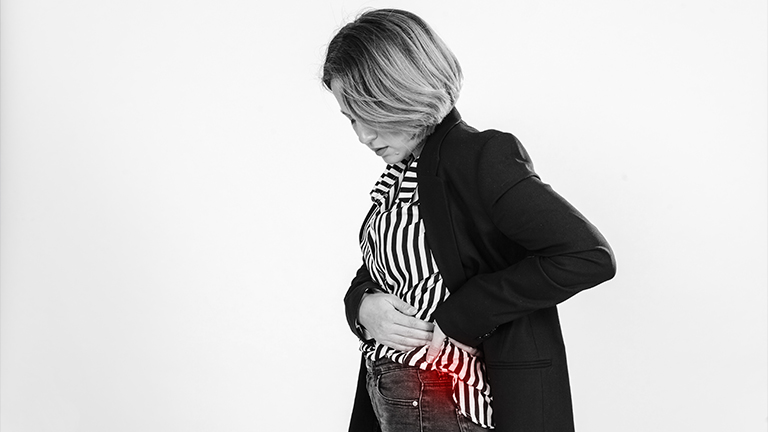Abdominal pain is one of the most common health complaints across all age groups. It can range from mild discomfort to severe, sharp pain that requires urgent medical attention. Understanding the causes of abdominal pain, its types, accompanying symptoms, and possible treatments is essential for proper care. Whether the pain is sudden, chronic, or associated with other symptoms like bloating, nausea, or fever, identifying the underlying reason helps in choosing the right remedy.
What is Abdominal Pain?
Abdominal pain refers to any discomfort felt between the chest and the pelvic region. The abdomen houses vital organs, including the stomach, liver, gallbladder, pancreas, intestines, kidneys, and reproductive organs. Because of this complexity, abdominal pain causes and symptoms vary widely, ranging from minor digestive issues to serious medical conditions.
Common Causes of Abdominal Pain
There are multiple factors that cause abdominal pain, and these can be classified into several categories:
Digestive System-Related Causes
- Indigestion and gas – Common after eating too quickly or consuming spicy, fatty foods.
- Constipation – Leads to abdominal cramps and bloating.
- Gastroenteritis (stomach flu) – Viral or bacterial infection causing diarrhea, nausea, and vomiting.
- Irritable Bowel Syndrome (IBS) – Chronic condition causing bloating, abdominal cramps, and irregular bowel habits.
- Food intolerances – Such as lactose or gluten sensitivity.
Infections and Inflammation
- Appendicitis – Sharp right-side abdominal pain, often requiring surgery.
- Diverticulitis – Inflammation of small pouches in the colon, causing lower abdominal pain.
- Gastritis – Stomach lining inflammation leading to upper abdominal pain.
- Pancreatitis – Severe upper abdominal pain that may radiate to the back.
Gynecological Causes (in women)
- Menstrual cramps – Common cause of lower abdominal pain in women.
- Ovarian cysts – May cause sudden or chronic pelvic and abdominal pain.
- Endometriosis – Painful condition where uterine tissue grows outside the uterus.
- Ectopic pregnancy – A medical emergency with sharp abdominal pain.
Urinary Tract-Related Causes
- Urinary Tract Infection (UTI) – Burning sensation with lower abdominal pain.
- Kidney stones – Severe, cramping pain radiating to the lower back and groin.
- Bladder infections – Can lead to persistent pelvic discomfort.
Other Serious Conditions
- Gallstones – Sharp right upper abdominal pain, often after fatty meals.
- Hernia – Bulging and discomfort in the abdominal wall.
- Cancer of abdominal organs – Rare but possible cause of persistent pain.
Types of Abdominal Pain
Upper vs. Lower Abdominal Pain
- Upper abdominal pain causes – Gallstones, gastritis, acid reflux, pancreatitis.
- Lower abdominal pain causes – Constipation, IBS, ovarian cysts, UTIs.
Sudden vs. Chronic Abdominal Pain
- Sudden abdominal pain – Appendicitis, kidney stones, ectopic pregnancy.
- Chronic abdominal pain – IBS, ulcers, endometriosis, chronic gastritis.
Left-Side vs. Right-Side Abdominal Pain
- Left side pain – Diverticulitis, constipation, kidney stones.
- Right side pain – Appendicitis, gallstones, liver disease.
Symptoms That May Accompany Abdominal Pain
Nausea, Vomiting, and Diarrhea
Common in gastroenteritis, food poisoning, and stomach flu.
Bloating and Gas
Often linked to indigestion, IBS, and food intolerances.
Fever and Fatigue
May indicate infection or inflammation such as appendicitis or UTI.
Diagnosis of Abdominal Pain
Physical Examination
Doctors check tenderness, swelling, and pain location to narrow down the cause.
Imaging Tests
- Ultrasound – Detects gallstones, cysts, or organ abnormalities.
- CT scan – Provides detailed imaging for appendicitis, kidney stones, or tumors.
- X-ray – Helps diagnose bowel obstructions.
Blood and Urine Tests
- Blood tests – Check for infection, inflammation, or organ dysfunction.
- Urine tests – Detect UTIs and kidney stones.
Treatment and Management
Home Remedies for Mild Abdominal Pain
- Rest and hydration.
- Warm compress to relax abdominal muscles.
- Herbal teas (ginger, peppermint) to ease bloating and cramps.
- Light, bland diet (bananas, rice, toast).
Medical Treatment Options
- Antibiotics – For bacterial infections.
- Antacids & acid blockers – For acid reflux and gastritis.
- Pain management medications – Prescribed for severe discomfort.
- Surgery – Required for appendicitis, gallstones, or hernias.
Lifestyle and Dietary Changes
- Eat smaller, frequent meals.
- Avoid excess caffeine, alcohol, and fatty foods.
- Stay hydrated.
- Incorporate fiber-rich foods for healthy digestion.
- Regular exercise to improve bowel function.
When to See a Doctor
Emergency Warning Signs of Abdominal Pain
Seek immediate medical help if you experience:
- Severe, sharp abdominal pain that doesn’t go away.
- Pain accompanied by high fever or chills.
- Bloody stools or vomiting blood.
- Difficulty breathing or dizziness with pain.
- Sudden abdominal pain during pregnancy.
Conclusion
Abdominal pain can stem from simple digestive issues or signal a serious medical condition. Understanding the causes of abdominal pain, recognizing its types, and knowing when to seek help are essential steps toward proper treatment.
Key Takeaways on Causes and Care
- Abdominal pain may be digestive, infectious, gynecological, urinary, or structural in nature.
- Symptoms such as nausea, bloating, fever, or fatigue often help in diagnosis.
- Treatment ranges from home remedies and lifestyle changes to medical care and surgery.
Always seek urgent care if abdominal pain is sudden, severe, or accompanied by alarming symptoms.


